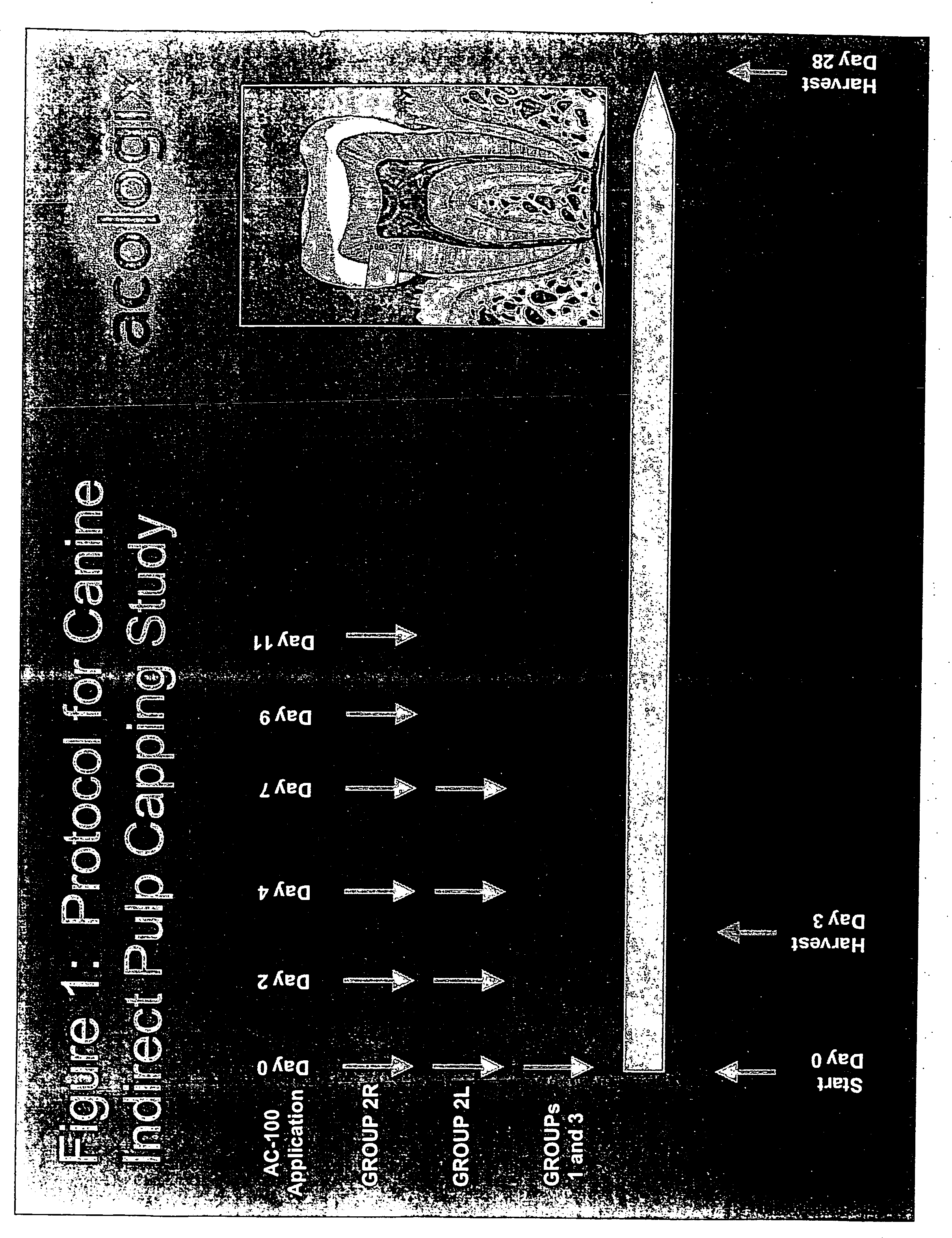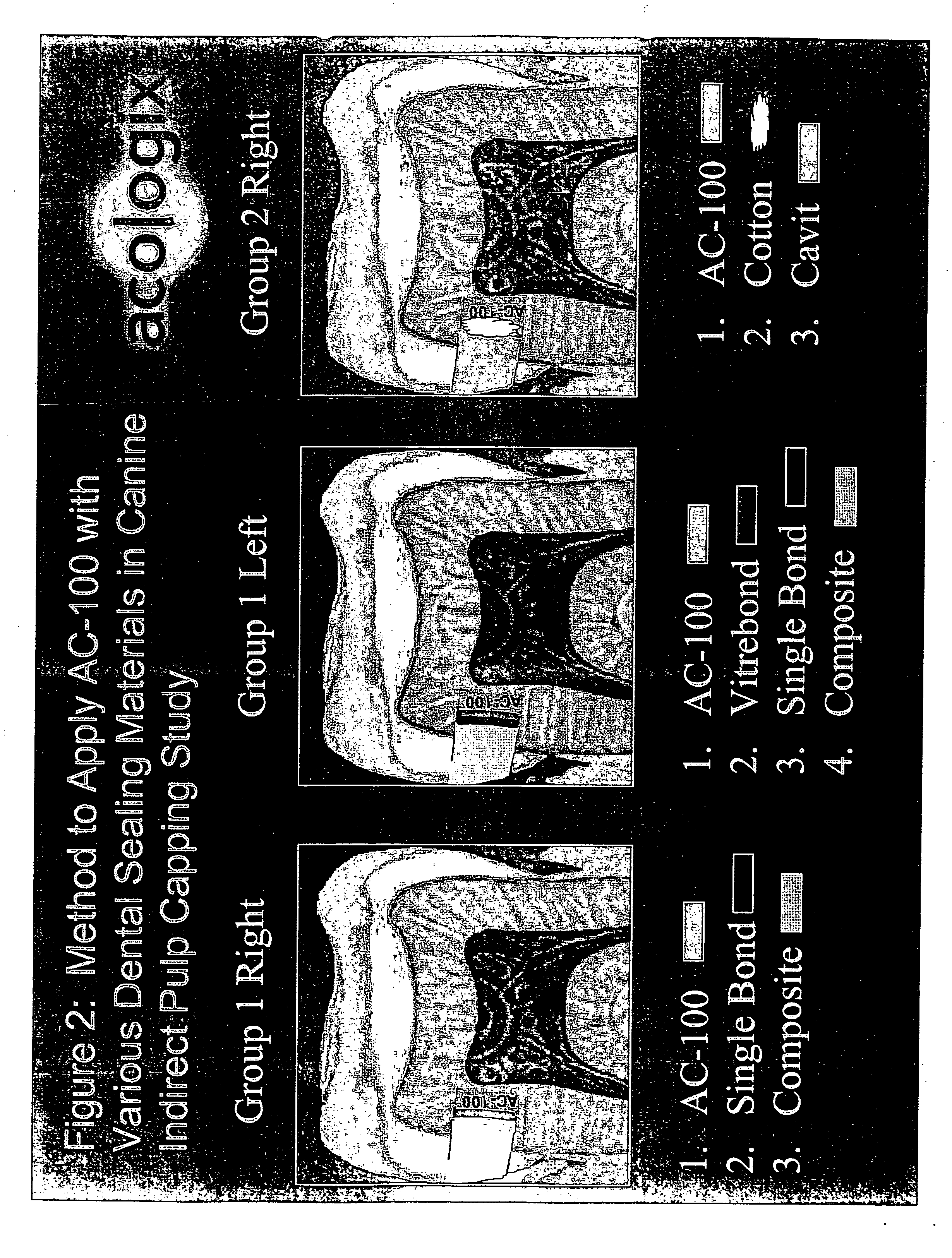Formulations of peptides for periodontal and dental treatments
a technology of peptides and peptides, applied in the field of bone and dental treatment, can solve the problems of pain and possible inflammation, severe pulp cavity damage, significant inflammation and pain, etc., and achieve the effects of preventing tooth damage and/or alveolar bone damage, regenerating hard tissue, and reducing inflammation
- Summary
- Abstract
- Description
- Claims
- Application Information
AI Technical Summary
Benefits of technology
Problems solved by technology
Method used
Image
Examples
example 1
[0167] Deep defects in molars in canines were treated with a formulation containing a peptide of the invention referred to as AC-100. The primary purpose of the study was to evaluate the degree of new dentin regeneration in the defects because AC-100 has been known to possess in vitro activities to promote proliferation of primary human dental pulp cells. A formulation of calcium hydroxide named “Dycal” that is widely used for pulp capping by dentists was employed as a positive control. The teeth treated with Dycal showed modest regeneration of new dentin in the defects and also demonstrated severe inflammatory reactions as well as many apoptotic and necrotic cell death in the pulp cavities. On the other hand, the teeth treated with AC-100 formulation demonstrated almost complete reduction of inflammatory reactions as well as apoptotic or necrotic cell death in the pulp cavities while it showed superior regeneration of new dentin tissue in the cavities. The test clearly demonstrated...
example 2
[0212] Sockets after teeth were extracted in canines were treated with a formulation containing a peptide of the invention referred to as AC-100. The objective of the study was to evaluate the new bone regeneration in the defects because anabolic effects of AC-100 have been shown in vitro in primary mesenchimal stem cell culture. Specifically, AC-100 has been shown to dose dependently induce proliferation and differentiation of the cells to osteoblasts. This has been shown in organ cultures of neonatal mouse calvariae and in in vivo injection onto the calvariae of mice. AC-100 has also demonstrated that it stimulates bone fracture healing in rats through a local injection near the fracture site (Lazarov, et. al., ASBMR 2004). Combining these preceding study results and the dentinogenesis activities shown by Example 1 herein, it was intended to evaluate whether or not AC-100 might have beneficial activities in rebuilding a bone bridge over a socket in the alveolar bone after a tooth ...
PUM
| Property | Measurement | Unit |
|---|---|---|
| Cell death | aaaaa | aaaaa |
| Area | aaaaa | aaaaa |
| Biocompatibility | aaaaa | aaaaa |
Abstract
Description
Claims
Application Information
 Login to View More
Login to View More - R&D
- Intellectual Property
- Life Sciences
- Materials
- Tech Scout
- Unparalleled Data Quality
- Higher Quality Content
- 60% Fewer Hallucinations
Browse by: Latest US Patents, China's latest patents, Technical Efficacy Thesaurus, Application Domain, Technology Topic, Popular Technical Reports.
© 2025 PatSnap. All rights reserved.Legal|Privacy policy|Modern Slavery Act Transparency Statement|Sitemap|About US| Contact US: help@patsnap.com



